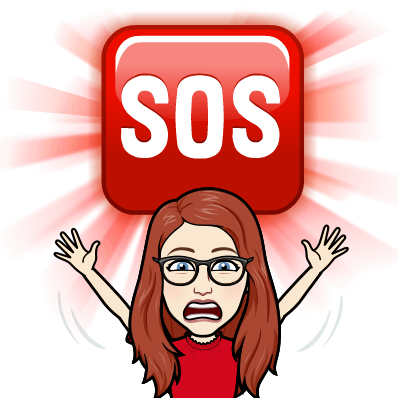La la la, la la la, la la la la la, oh
You know I’ve never felt like this before
La la la, la la la, la la la la la, oh
This feels like so unreal
I begin to hum my theme song as I pull into the parking lot at school. Maybe you have heard it before: SOS by Rhianna. It is the new teacher anthem; teachers everywhere have been begging for help and sending out an SOS for quite some time. How much longer do teachers need to send out an SOS for things to change?
“Please don’t add anything to my plate!”
A teacher recently said this in a meeting, and I cannot agree with this enough. Teacher’s plates are, and have been, unbelievably full for as long as I can remember. The amount of time it takes to plan, prepare, and grade all of the activities that we do in one school day is astonishing. Teachers usually have between 30 – 45 minutes of planning a day, and the amount of planning, preparation, and grading takes at least double the amount of time daily. When you add in the all of the extras teachers do, but are also job requirements, such as communicating with parents, collaborating with teammates and administrators, progress monitoring students, handling lunch time or recess issues that arise, completing progress reports and report cards, keeping up with district or school-wide initiatives, and more there is no room left on a teacher’s plate for anything else.
If all of these things are going to continue to be in a teacher’s job description, there needs to be adequate support. This might look different for different schools or districts, or perhaps even different grade levels but needs to be put in place for teaching to remain a sustainable profession. Some solutions might include:
- Building in more preparation time during the school day. Maybe this is an additional recess supervised by instructional assistants or district coaches, more than one specials period per day, or team teaching to share the load of running a successful classroom.
- Hiring an instructional assistant for every classroom to handle grading assignments, preparing progress reports and report cards, preparing activities, etc. If teachers’ time is constantly being used for meetings, then providing support for the other aspects of teaching would make this more manageable.
- Strategic use of meetings and PLCs. Some meetings could be replaced by an email, which gives teachers valuable time back to handle planning and preparation. Some PLCs or trainings need to be facilitated in person, and perhaps these could be scheduled during the summer. Especially if this is for a school-wide or district-wide initiative; it would be helpful to see the whole picture rather than building the plane while flying it and piecemealing the training together during the school year.
“I don’t know if I can do this anymore.”
I hear this from teachers frequently. Many teachers have realized exactly that, that they cannot do this anymore, and have left the profession. The teacher shortage in Arizona has been discussed for years. Many schools are still not fully staffed at this point in the year and many classrooms are not taught by certified teachers. We cannot continue to ignore the SOS signals that teachers are continuously sending out; something must change. What’s it going to take for someone to listen and respond to the SOS?
See recent blog posts here, here, and here for more information and other perspectives related to teachers sending out an SOS.









